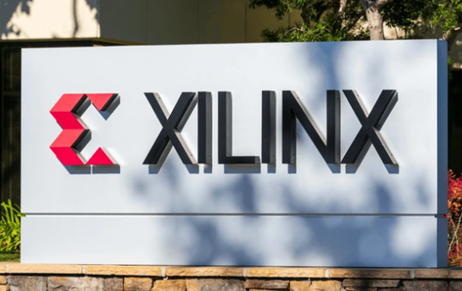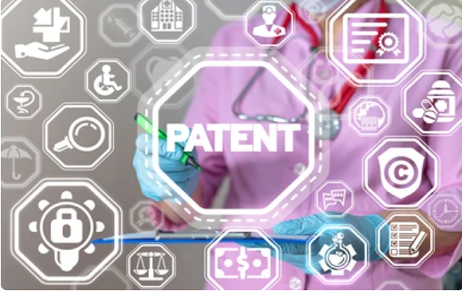Xilinx is a leading technology company focused on innovation and creating and monetizing its Intellectual…
All You Need to Know About Patent Licensing
What is a patent?
An exclusive right granted for an invention, which is either a product or a process, and offers a new way of doing work or provides a new technical solution to an existing problem, is called a patent.[i]
What is called Patent Licensing?
Patent Licensing is an act of or a process of granting, to a third party, permissions to extricate benefits by selling and using the licensed product. The patent owner gives a license to a third person to use, sell and extract benefits from his patented invention, for an amount already decided as royalty.
A patent owner can give away or transfer his interests in a patent to a third person. The licensor gives away his rights on the invented patented intellectual property for a period of time over a mutual agreement. During such a period, the licensee can extract benefits and have rights in the interest of the patent. He may use and make the licensed design and can also gain profits during the licensed period.
As per Section 68 of the Patent Act, 1970, for a patent license to be valid, the agreement must be in writing. In the case of PVR Pictures Ltd. v. Studio 18 [2009 SCC OnLine Del 1878 : (2009) 41 PTC 70]. Delhi HC held that the term sheet agreement shall not amount to a license agreement.
What are the types of Patent Licenses?
There are following five types of patent licensing:[ii]
1. Exclusive License: An exclusive license is one in which all the rights of the patent are transferred to the licensee, but the title. In such a case, the licensee has all the rights as of the patent owner except for transferring the patent to another person. This restriction is because in such license even with the transfer of all other rights the right over the title still rests with the patent owner. It is exclusively granted to a particular party and hence cannot be further transferred. In this type of license, the chances of the patent getting infringed are minimal as the rights are less being exploited and the licensee has a monopoly over the market.
2. Non-exclusive License: In a non-exclusive right, the licensee has the right to sell and make the patented design, but such a right is not exclusive. The patent owner may grant permission to use and make such patented design to any other person also. In this case, all of them have the right to make, use and sell the patented design. The rights enshrined by this license are not exclusive to a particular licensee.
3. Sub-license: It is a type of license issued by the licensee to different organizations to make the products. Sublicense can be said to be granting of certain licensed rights on a product to a third party by the licensee.
4. Cross License: When a product requires the support of some other product to make its place in the market and for better utilization, cross-license is preferred. Cross license can be understood as an exchange of licenses between different organizations and individuals. Recently, Ericsson and Oppo entered into a cross-license agreement between them covering various patent portfolios of both the companies including portfolios of 2G, 3G, and 4G.
5. Compulsory License: When the government grants permission to any individuals or organizations to use, sell or make a patented design or product, irrespective of the will of the patent owner, for the public good, it is referred to as a compulsory license. A compulsory license is usually seen being granted in the pharmaceutical products and the products which fulfill the criteria as mentioned in Section 84 of the Patents Act, 1970. The first compulsory license, in India, was given to Natco Pharma Ltd. for producing a generic version of Nexavar which was a patented medicine of Bayer Corporation, on March 9, 2012.
What are the advantages of patent licensing?
1. Transfer of risks: Manufacturing and production of a design or product have a lot many risks involved. With patent licensing the patent owner can transfer such risks involved in the production of patent design or product to the licensee.
2. Global Market: It becomes difficult for many companies to have mass production of a product individually. Patent licensing comes to aid to overcome this difficulty as it permits other organizations to produce the patent products and thereby help in mass production. Patent licensing thus can help in introducing one’s invention in the global market.
3. Limited Period: Because patent licensing is done for a limited period, the owner gets back his exclusive rights over his invention as and when the license duration expires.
4. Competitive Advantage: If the patent is licensed to an already established organization with a large customer base, the patent product will have a larger market to capture in comparison to other patents, giving it a competitive edge over other patents.
What are the disadvantages of patent licensing?
1. Difficulty in determining licensee: It takes lots of effort and time to determine the appropriate licensee for the invention. It is essential to get a potential licensee and have a structured agreement in order to have the greatest chances of success.
2. Loss of control: For the period of the license, the patent owner transfers his rights to the licensee. The result of this is he loses his own control, either partially or fully, on his own invention.
3. Risk of licensee’s ability: The patent owner relies on the efficiency and abilities of the licensee to effectively commercialize the patent product. The risk of poor strategy and quality management can adversely affect the patent’s reputation and success.
What is the difference between Patent License and Patent Assignment?
Patent License can be referred to be an act of the patent owner where he grants permission to extract benefits on interests on the patent to a third party for a limited period of time. Such transfer of rights is temporary in nature. In a patent license, the licensee is needed to pay the royalty to the licensor for the entire duration of the license period.
Whereas, Patent Assignment can be said to be an act of the patent owner wherein the owner transfers the exclusive rights of the patent permanently. Such a transfer is recorded in the official patent record. In the patent assignment, the assignee is required to pay the lump-sum amount to the assignor in the beginning and can later receive profits from the patented invention.
What are the common mistakes committed during patent licensing?
1. The licensee tends to use the patented design or product before signing the license agreement resulting in patent infringement. The licensee should ensure that he has signed the license agreement before using or selling the product or design so patented.
2. In the haste of growing rapidly, some inventors fail to find a suitable licensee for their product and end up granting a license to some non-competent party. This results in the failure of the invention which could have had flourished in the global market had the owner opted for an efficient licensee.
3. Lack of awareness regarding the liability of the owner also leads to loss for the licensee. The licensor is still the owner of the patented product or design, even during the license period. Thus, he can be held liable for his invention even during the license period.
What are the approaches to patent licensing?
There are two ways of approaching patent licensing:
1. Carrot Licensing: In this case, the person or the organization one wants to do business with is not into using the patented technology or the product. The owner of the patent must convince the party to use his product and how licensing the product or technology be beneficial for them.
2. Stick Licensing: In this case, the person or the organization has already used or is using the patented design, technology, or product and thus, has infringed the patent. The owner can file a suit against the infringer or settle with the infringer agreeing to license his patent.
What is the patent licensing royalty rate?
When an inventor licenses his patent to any third person, they both enter into the license agreement wherein rights of the patent are given to the licensee and in return, the licensor receives a certain amount of money fixed in the agreement every time the product is sold. This fixed amount is given to the licensor or the inventor is called royalty, and the percentage of the net or gross profit decided to be the royalty is referred to as patent licensing royalty rate.
Royalty rates generally vary from 0.1 to 25 percent depending on the type of industry and the invention.[iii]
Conclusion: Recently a company in Bengaluru came up with the concept of e-scooters though the price of it is high making them inaccessible. Further, Kerela Government asked all the government transport to be e-vehicles. It can be thus suggested that patent licenses should be granted for the global reach of the products and those for the public good should be either be compulsory licensed or free licensed.
Author: Sonal Sodhani, Intern at Khurana & Khurana, Advocates and IP Attorneys. In case of any queries please contact/write back to us at ankit@iiprd.com
References:
[1] https://www.wipo.int/patents/en/
[2] https://www.greyb.com/patent-licensing-101/
[3] https://www.upcounsel.com/patent-licensing-royalty-rates



